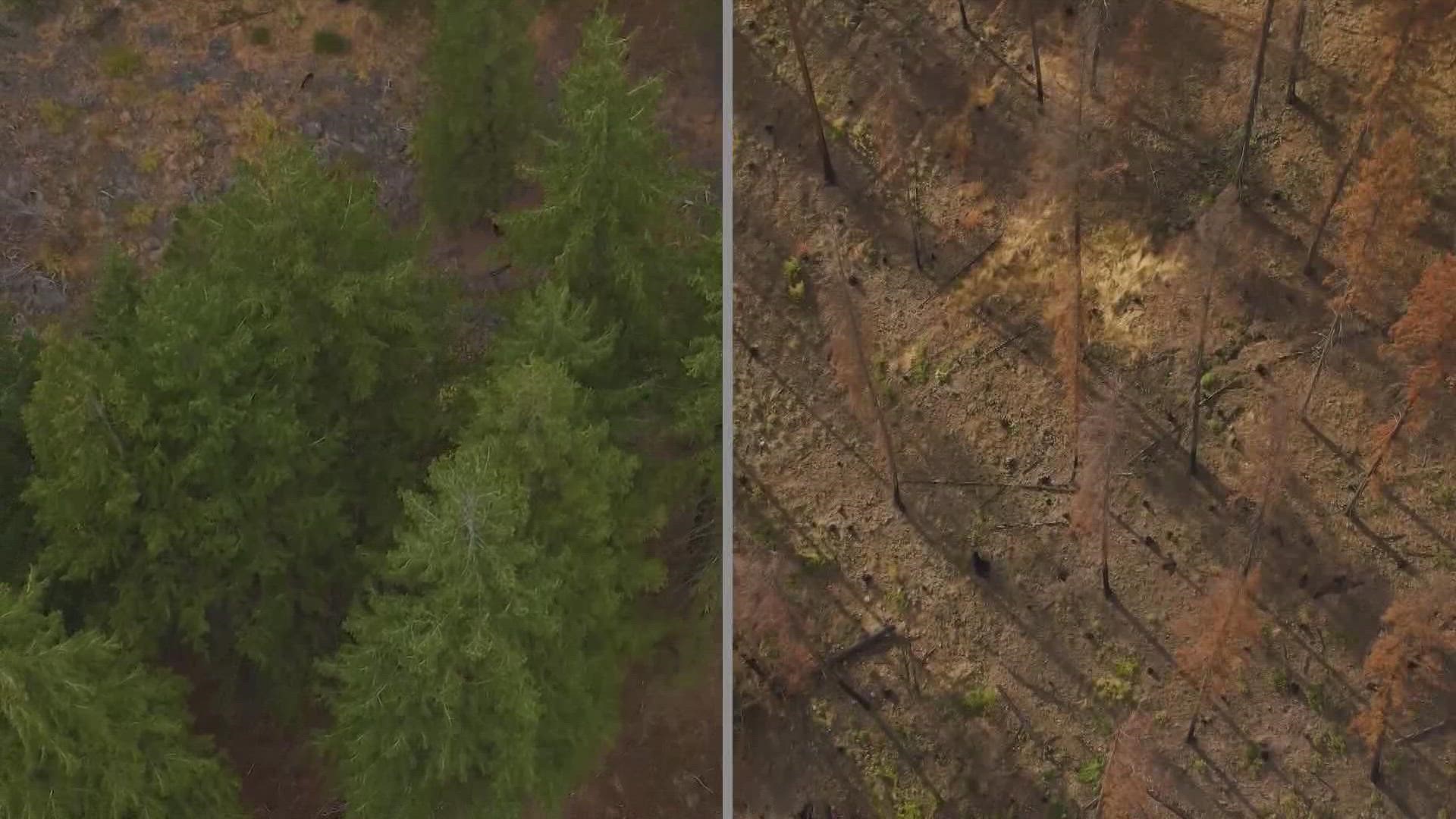YAKIMA COUNTY, Wash. — Forest managers with the Washington Department of Natural Resources and US Forest Service say they saw differences in how treated land fared in the 2021 Schneider Springs Fire versus untreated forests.
They're hopeful it can help guide policy in a way that protects forests for the future and allows wildfires to burn in a safer, more controlled way -- allowing them to devote more resources toward protecting homes, businesses and infrastructure.
WADNR and USFS revisited an area within the Schneider Springs Fire perimeter that burned west of Yakima. WADNR says within the fire perimeter, there is a USFS thinning and prescribed burning project that stood up well against the wildfire. Adjacent to that land are WADNR forest areas that were thinned, but hadn't been burned; they fared slightly better than untreated areas, but not as well as the USFS thinned-and-burned portions. The untreated areas burned the worst -- in a way that will make it more difficult for the forest to recover.
"When we can do thinning, which reduces the number of trees and makes the forest more resistant to drought and ready for the hotter summers we're seeing with climate change, it's really important," WADNR Forest Health Scientist Derek Churchill said. "And if we can do prescribed fire and treat those fuels, that's the best case scenario."
US Forest Service Fire Management officer Jason Emhoff says the Angel Underburn Project area, located off Chinook Pass in the Rattlesnake Creek Drainage, was first treated by logging and non-commercial thinning; later, USFS went in and did prescribed burning on thousands of acres.
"This is is a small footprint on a big landscape but when you look at it, what this did is allow us, in a time period where we had short resources nationwide, is redeploy these," Emhoff said.
Emhoff says with underburns, the focus is getting rid of hazardous fuel, including duff that's built up over the years in the ground.
"What that does is when fires do come, and if you have that residual duff in the ground, it stays in there and doesn't just burn," Emhoff said. "The needle cast, stuff on the ground, it gets in the roots and kills a lot of those trees as well."
Still, Emhoff and Churchill say there are challenges to prescribed burning -- which does create impacts for surrounding communities.
"One of the things we can do is proactive treatments in the forest," Emhoff said. "It's not easy because what we do is very time-sensitive, and the same people who do it are people who'd be out fighting fires as well so there's a big effect there, and smoke is an issue cause [prescribed and natural wildfires are] both creating smoke."
Churchill notes that while big wildfires do a lot of damage to forests and communities and create a lot of smoke, some fire in the forest is natural and good for the life cycle of trees.
"With the Schneider Springs fire, probably around 2/3rds of it the fire burned the way we wanted it to," Churchill said. "It cleared fuels, thinned forest and left a lot of trees alive there, making the forest healthy there."

